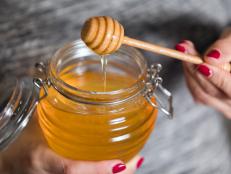How Much Fruit Should You Eat?
Our dietitian explains how much fruit you need each day and what counts as a serving of fruit.

DenisMArt/Getty Images
The serving size for any food isn't "one size fits all." It depends on numerous factors like the food group, shape and nutrients provided. I’ll layout your standard fruit serving sizes and delve into the nitty-gritty details of some not-so-traditional foods (like those squeezable fruit pouches) so you’ll know what one serving of fruit actually is.
How Much Fruit Is Recommended?
According to the USDA’s MyPlate, any fruit or 100% fruit juice can make up a serving of fruit. Fresh, canned, frozen, freeze-dried, dried, whole, cut up and pureed fruit all count. How much fruit you need each day varies by gender, age, and level of physical activity. Here are the guidelines for men and women ages 19 and older:
Women:
- 19 to 30 years: 2 cups
- 31 years and older: 1 1/2 cups
Men:
- 19 years and older: 2 cups
What Is a Serving of Fruit?
As a general rule, one cup of 100% fruit juice or 1/2 cup of dried fruit (like apricots or raisins) counts as 1 cup. Here are examples of what counts as 1 cup of fruit:
- Apple: 1/2 large (3.25"diameter), 1 small (2.5" diameter), 1 cup sliced, chopped or cooked
- Applesauce: 1 cup
- Banana: 1 large (8-9” long) or 1 cup sliced
- Cantaloupe: 1 cup of cubed melon or 2 medium wedges (about 1/4 of a medium melon)
- Grapes: 1 cup whole or sliced or 32 seedless grapes
- Grapefruit: 1 medium (4" diameter) or 1 cup sectioned
- Orange: 1 large (3-1/16" diameter)
- Peach: 1 large (2-3/4" diameter), 1 cup sliced or 1 cup canned and drained peaches
- Pear: 1 medium (2 1/2 per pound), 1 cup sliced or 1 cup canned and drained pears
- Pineapple: 1 cup sliced, diced, or crushed, 1 cup cooked or 1 cup canned and drained
- Plum: 3 medium or 2 large, or 1 cup sliced or cooked
- Strawberries: 8 large, 1 cup whole, halved or sliced, fresh or frozen
- Watermelon: 1 cup cubed or 1 small wedge (1" thick)
A few items not mentioned by the USDA include:
- Fruit purees: 1/2 cup = 1 cup of fruit
- Fruit nectar: 8 fluid ounces = 1 cup of fruit
- Freeze-dried fruit: 1/2 cup = 1 cup of fruit
What About Packaged Fruit Products?
There are other foods where fruit is an ingredient, such as squeezable fruit pouches, fruit juice blends or fruit snacks. The manufacturers of these foods should provide consumers with information about how many cups of fruit per serving. For example, for a fruit juice blend the label should read: 8 fluid ounces provides the equivalent of 1/2 (or 1) cup fruit serving of the 2 cups recommended each day.
As a consumer, it's important to keep your eyes peeled for this info on the food package. Some foods may say they're "made with real fruit", but there’s just not enough fruit to count in your daily recommended cups. It's also important to realize that many processed forms of fruit (like fruit-filled pastries or fruit snacks) may contain many more calories than 1 piece of fresh fruit and are laden with artery clogging saturated fat, added sugar, additives and preservatives. So even if the food claims to provide 1/2 or 1 cup of fruit, you’re also ingesting a boatload of unhealthy stuff.
Bottom Line: You can get your servings of fruit each day from a variety of sources.
Fresh, frozen, canned, dried, and even 100% fruit juice all count toward your servings of fruit each day. Weigh the good and the bad of each item before you pop it in your mouth. Some packaged goodies may come with a lot of unhealthy baggage, even if they do contain fruit.
Toby Amidor, MS, RD, CDN, is a registered dietitian and consultant who specializes in food safety and culinary nutrition. She is the author of The Greek Yogurt Kitchen: More Than 130 Delicious, Healthy Recipes for Every Meal of the Day.
*This article was written and/or reviewed by an independent registered dietitian nutritionist.
Related Links:


































